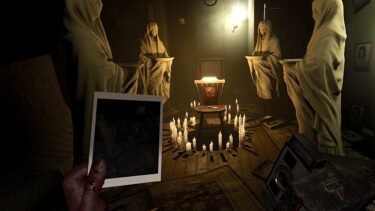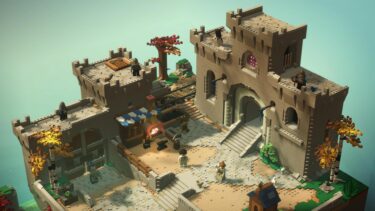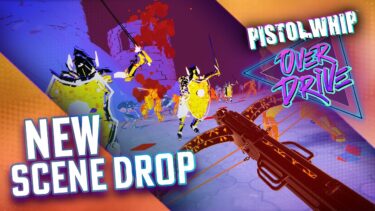The Application of XR into the attractions and amusement landscape is covered by industry specialist Kevin Williams, in his latest Virtual Arena column – we look at the innovations that saw VR enter the indoor amusement scene at the dawn of the technologies’ application, some thirty years ago.
In this latest column for MIXED, we enjoy a little Blast-from-the-past during the embryonic first phase of application of VR into the mainstream, and how the tech evolved to the application we now see applied today. The cumbersome application of the available technology honed by the largest entertainment corporation to be applicable in the emerging market back some thirty years ago.
Innovation
The opportunity that immersing guests within virtual environments was not lost on those in the highly innovative sector of theme park development. At the time, leaders in research & development of themed attractions and park development, Walt Disney Imagineering (WDI) comprised teams looking at the latest technology towards developing guest experiences across their chain of resorts and parks. Springing from WED Enterprises drive, “Imagineering” – was a termed coined back in the late 1940’s to define blending “Imagination” and “engineering” required to innovate, which Disney saw it needed to define the future of the guest experience.
The business unit within Disney would be expanded in 1992 to embrace the then emerging computer aided development applications, founding Walt Disney VR Studios. A team of visionaries and specialists that would go on to explore and develop the emerging technology of VR towards possible utilisation in design and application. In our previous coverage of WDI evaluation, we saw how early “CAVE” (Computer Automatic Virtual Environment) technology would be defined in 2012 for Disney R&D with their ‘Digital Immersive Showroom’ (DISH), offering wall-to-wall, super high-resolution (4k) projection for park design and development.
In 1993, the Disney VR Studio would take embryonic VR technology and shape it to fit their needs. Working with legendary VR hardware developer n-Vision – famous for bringing much from the research sector VR into the commercial scene. The company having one of the highest-resolution commercial Head-Mounted-Displays (HMD) for the time, employing CRT (cathode-ray tube) optics – with their ‘Datavisor’. Taking this as a foundation the Disney engineers would create a reworking of the tech able to be employed as a pathfinder for a fieldable entertainment experience.
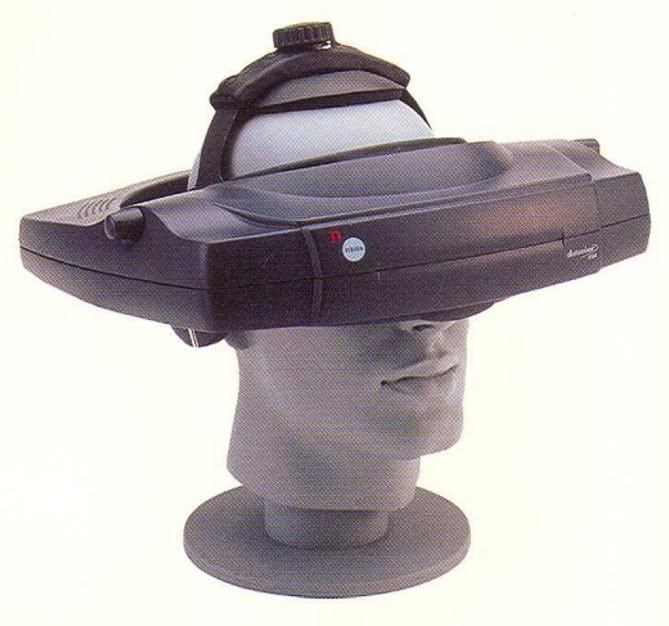
So was born by the Studio the ‘DisneyVision’ HMD (nicknamed “Gatorvisor” based on it extreme looks), employing 62-degree FOV, VGA 640×480 resolution via its pair of CRT’s, now mounted on the front to give it its distinctive design. A design that needed to employ suspended weight relief through a cradle, borrowing heavily from the “Sword of Damocles” weight relief system, seen on the original display system from the 1960’s. Head movement tracking would be achieved using Polhemus and their magnetic tracking platform.
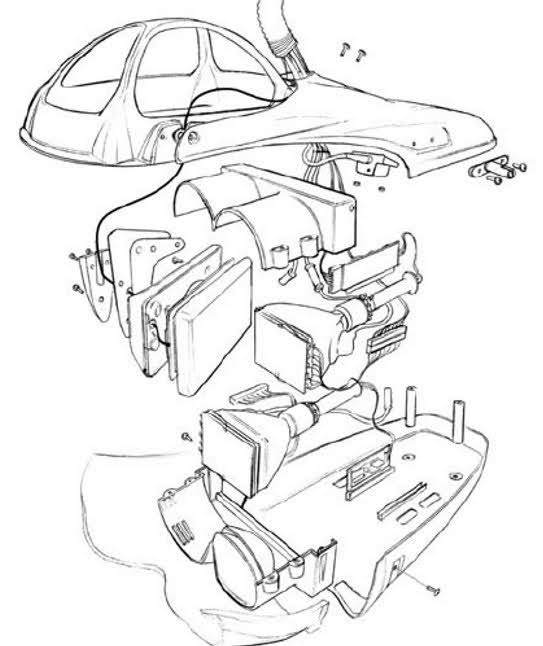
To create the virtual worlds that would be spied through the Gatorvisor, even-more cutting-edge computer hardware would be employed. Using the then state-of-the-art Silicon Graphics Incorporated (SGI) ‘Onyx’ super-computer to achieve amazing results for the time, at a solid 60htz. CGi renderings of environments taken directly from the 1992 Disney animated movie ‘Aladdin’, navigated through, using a unique motion controller representing steering a magic carpet. All this was placed on a motion-platform to add to the immersion.
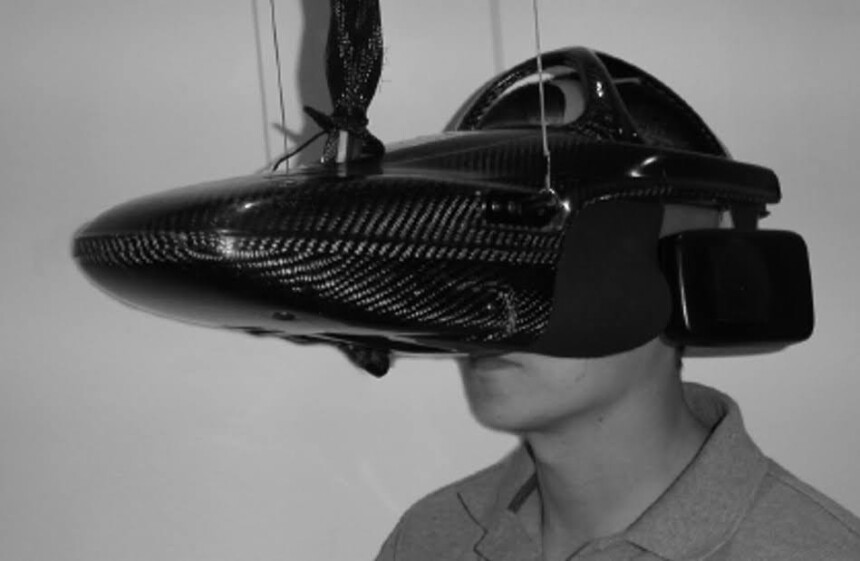
Adventure
This ground-breaking R&D project would be called ‘Aladdin’s Adventure’ – and would be presented to numerous Disney executives as an example of what advance technology was capable of. Achieving many firsts for the science, along with being the first-time an animated movie could be experienced in VR.
So innovative was the R&D demonstrator, Disney decided to deploy the system on site, at a park, to gauge audience reactions to this immersive approach. In 1994 the Theme Park division installed VR for the first time. Part of an exhibit entitled the ‘Imagineering Lab’ at Epcot, including a “sneak peak” of the Disney Vision Adventure – in Virtual Reality.
A live audience presentation that showed the work on the experiences and skills employed in the magic making of the imagineering teams. Along with emerging CGi character animation, (a year ahead of the success of ‘Toy Story’ made the application mainstream). The park experience also offered selected audience members a chance to try the VR adventure. Flying through the CGi world created based on the Aladdin movie. The audience experience would go on to entertain some 45,000 guests during its operation.
Competition
But other entertainment corporations would also be looking at VR as a opportunity to immerse a new audience demanding for new thrills.
Japanese amusement and entertainment giant SEGA, during 1993, saw the corporation partner with then leading VR exponent Virtuality, who had championed VR in amusement deployment with varying success. Awarded a £3m contract by SEGA to work with their AM3 development team to create their own VR HMD. Going on to release the ‘SEGA Mega Visor Display’ (MVD).

Where Disney had looked to create the most visually compelling system – SEGA benefited from Virtuality’s past innovations in reducing the overall design to a compact formfactor. Even if it did not have the high-quality CRT’s in favor for a lightweight LC display matrix.
Like Disney, the technology was seen as ushering in a new era of attraction development, and in 1994, SEGA rolled out the ‘VR-1’. A mid-scale attraction for six riders pacing them in an interactive experience called ‘Space Mission’. This was created for the corporation’s new generation of venue. Branded ‘JOYPOLIS’ – an indoor amusement theme park, which was first seen with a Yokohama site. Going on to be rolled out across six other JOYPOLIS and SEGAWorld venues.
Prospects
SEGA would go on to release another 3 game experiences for their ‘VR-1’ system, all part of establishing their indoor amusement theme park chain. This concept would garner interest especially from Disney, as a possible new approach to drawing the modern audience to interactive entertainment able to be placed regionally, rather in expensive theme park conglomerations.
In 1994, Walt Disney and SEGA would start high level negotiations towards a collaboration that would see their indoor amusement parks operated by Disney in the West, also supplying their movie properties. A grand concept saw the creation of Disney Regional Entertainment to manage the rollout of such venues, building on the indoor mid-scale attraction approach.
But such were the egos of the corporate giants involved that the partnership with SEGA would start to unravel, the grandiose plans collapsing. Ending acrimoniously between both supremos of Walt Disney and SEGA Japan. SEGA would in 1995 go on to partner with the troubled ‘SEGA GameWorks’ entertainment chain, forming a collaboration with ex-Disney execs, at DreamWorks as the big movie property supplier. Bringing creative leads including close affiliation with movie visionary Steven Spielberg.
Reinvention
Unthwarted, the Walt Disney Corporation would not abandon its plans to roll out its own inspired indoor theme Parks. Disney management redirecting Disney Regional Entertainment to develop their own amusement concept to compete in this new sphere. And so was born ‘DisneyQuest’ – Indoor interactive theme park.
The first proof of this concept would open in 1988, and be located at Disney Springs, with a 100,000-sq., ft., facility comprising some five floors that held a selection of zones including innovative interactive amusement. Much of that proven from concepts originated in the Japanese spate of amusement parks (such as at ‘JOYPOLIS’ (SEGA), ‘WonderEgg’ (NAMCO) and ‘NeoGeoWorld’(SNK)).
And with this need to offer Disney concepts of various disciplines, the corporation was able to dust-off previous R&D projects and offer them within this new space. In the “Explore Zone” would see the installation of ‘Aladdin’s Magic Carpet Ride’. A reinterpretation of the original Aladdin Adventure system from 1994, now updated with a more attraction game approach and designed to fit the style of the DisneyQuest design.
The GatorVisor would be productized for the needs of an amusement space deployment – while the magic carpet controller also rationalized for mainstream approach, with a special seating arrangement replacing the elaborate motion-platform of the original. The Aladdin game adventure also updated to offer more populus game orientated action with multiple users.
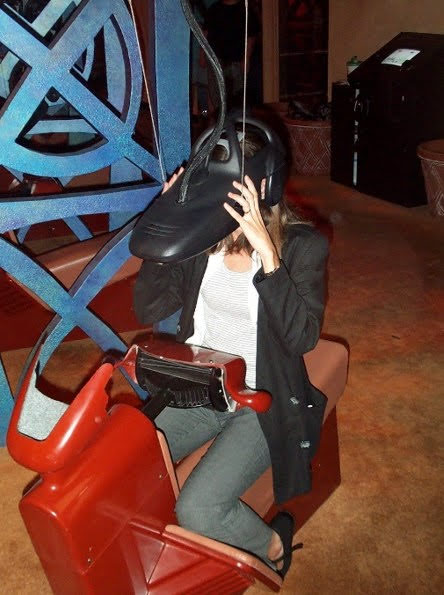

Disney would also work on a second VR experience for the DisneyQuest space. In the “Score Zone” – the corporation’s Imagineers and third-party game developer, would create a totally unique VR experience. Originating a unique Disney comic book series – with superhero characters to battle in the ‘Ride the Comix’ experience.
Using virtual laser swords, players would battle hoards of villains in various cartoon settings, riding their craft. Specialized sword controllers wielded by the six players. Seated on special benches. A highly innovative attraction concept that pushed the very boundaries of the rudimentary technology of the time. Employing the GatorVisor tech, and lessons learned in developing the VR platform, (Disney’s answer to SEGA’s ‘VR-1’).
Reality
For Disney, a near $90m investment was to see a Phase 1 of the Quest-store concept, with plans for 15 sites rolled out from Chicago to London after the first opening. However, the reality would be that the DisneyQuest concept, while innovative, the profitability of indoor amusement parks was a difficult business. Expensive hardware and software, and a complicated operational model would prove impossible to master.
Following the opening of the Disney Springs site in Orlando, a second site would open in Chicago, but the writing was on the wall, and Disney would abandon further development. The Chicago site would close over a year from opening, while the Orlando site would buck the odds and take on a life of its own. Proving popular, while expensive to operate, would soldier on becoming a hidden favourite with attendees at the Walt Disney World Resort. Eventually closed just short of twenty years of operation (proving the indoor concept had legs if the right mix could be found).
The five story DisneyQuest building would be demolished, and a new building raised on the spot, with ‘The NBA Experience’, comprising a restaurant and interactive sports element. However, this concept would prove a failure unable to entertain the intended audience.
Now some twenty-five years since the VR concept was launched by Disney, and VR attractions are commonplace in Location-based entertainment (LBE). Disney even investing in its own second abortive attempt in this sphere with theVOID, (a story for another time). Whether the Disney corporation will look towards a third attempt in this sphere of immersion is yet to be revealed but would not be surprising.
This concludes our latest snapshot into the commercial entertainment applications of immersive technology, and its successes and challenges. Our next feature will follow next month.
Source: Mixed News

